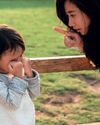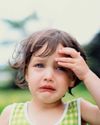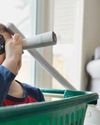Open-ended play is critical for your child’s development, but what does that mean? Experts explain how you can help your little one.

Is there a difference between building a Lego structure according to the instruction booklet, and creating an original design from your imagination? Turns out there is.
The latter is an open-ended play experience – one that is not led or directed by adults. It’s the type of play children should be engaged in to grow and learn, say experts.
But the problem is, kids are doing less of it than ever before. A 2013 study found that children aged three to six have a play gap of nine hours per week.
That is, they have nine fewer hours of open-ended play per week than their parents had. The study, conducted by Playeum, an independent non-profit organisation that promotes play and creativity for children in Singapore, surveyed 101 parents.
What does this trend mean for you? Young Parents asks the experts for their advice.
So, what’s behind this play gap?
Sumitra: One thing is that we live very hurried and busy lives – not only in Singapore, but also globally. So, we are quite busy and stretched for time, and our children are also increasingly doing more and more extracurricular activities after school.
The other thing is that our environment is very structured. If you look at our playgrounds, our schools and even preschool areas – all of them have rubberised mats.
Of course, that’s to maintain hygiene and cleanliness but, at the same time, it’s a very different experience from playing on grass and mud, or if there are big trees in playgrounds with a lot of branches and twigs, or if there is sand or an area with water collecting in the ground. And that limits what children can do in the environment.
The third thing is safety. Parents are becoming increasingly concerned about child safety, and they’re too afraid of letting their kids fail or get injured.
この記事は Young Parents Pre-School Guide の Young Parents Preschool Guide 2017 版に掲載されています。
7 日間の Magzter GOLD 無料トライアルを開始して、何千もの厳選されたプレミアム ストーリー、9,000 以上の雑誌や新聞にアクセスしてください。
すでに購読者です ? サインイン
この記事は Young Parents Pre-School Guide の Young Parents Preschool Guide 2017 版に掲載されています。
7 日間の Magzter GOLD 無料トライアルを開始して、何千もの厳選されたプレミアム ストーリー、9,000 以上の雑誌や新聞にアクセスしてください。
すでに購読者です? サインイン

What's Your Kid's Learning Style?
Every child learns differently. Here’s how to leverage on their innate learning styles for academic success.

8 Foods To Improve Kid's Brain Function, Memory And Focus
These eight foods help improve brain function, memory and focus, so your child can perform better in school.

Are You Disciplining Right?
When it comes to disciplining preschoolers, ignoring tantrums or being too permissive can backfire. Here are common discipline mistakes to avoid.

What You Must Know About Speech Problems
Find out if your toddler’s language development is on track, what to do about stuttering and when to seek help about speech disorders.

6 Steps To A Healthier Child
Keeping active is good for your little one’s development, but make sure you support her with the right nutrition, sun protection and even regular downtime.

The world is their classroom
Amber Yong, the globetrotting supermum of Instagram stars @leialauren, is far from kiasu when it comes to her kids’ preschool education. She shares why.

You'll Be Fine
There are many reasons behind your preschooler’s continued separation anxiety. Find out which issue bugs her and fix it fast.

Money Talks
It’s never too early to teach your child about the value of saving, especially after festive periods and when he’s flush with birthday hongbao.

No More Tears
There are several reasons behind your child’s tears when you drop her off at preschool. Learn to identify them and tailor your response accordingly.

Let Them Play
Open-ended play is critical for your child’s development, but what does that mean? Experts explain how you can help your little one.